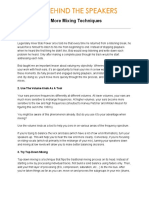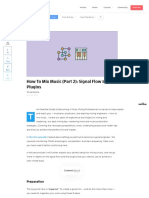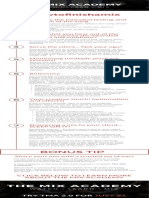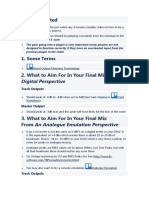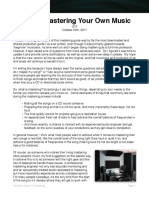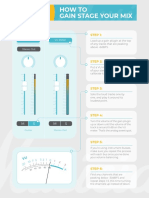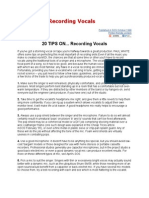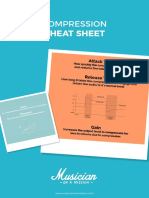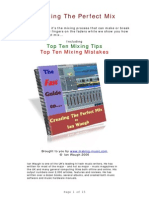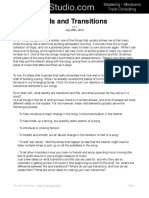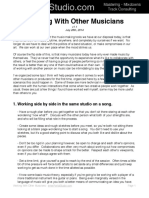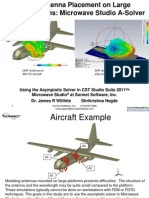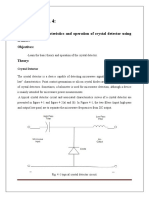0% found this document useful (0 votes)
376 views7 pagesMixing Tips for Audio Engineers
The document provides 5 tips for adding clarity and separation to mixes: 1) Distribute tracks evenly across the frequency spectrum like distributing clothes across dresser drawers; 2) Boost higher frequencies on bass tracks to add clarity while keeping the low end clean; 3) Use spectral slotting to carve out frequency spaces for competing tracks by cutting frequencies where they mask each other; 4) Use a spectrum analyzer plugin to identify problems like masking in the mix; 5) Employ sidechain compression to reduce masking between tracks like the bass and kick.
Uploaded by
Makki ABDELLATIFCopyright
© © All Rights Reserved
We take content rights seriously. If you suspect this is your content, claim it here.
Available Formats
Download as PDF, TXT or read online on Scribd
0% found this document useful (0 votes)
376 views7 pagesMixing Tips for Audio Engineers
The document provides 5 tips for adding clarity and separation to mixes: 1) Distribute tracks evenly across the frequency spectrum like distributing clothes across dresser drawers; 2) Boost higher frequencies on bass tracks to add clarity while keeping the low end clean; 3) Use spectral slotting to carve out frequency spaces for competing tracks by cutting frequencies where they mask each other; 4) Use a spectrum analyzer plugin to identify problems like masking in the mix; 5) Employ sidechain compression to reduce masking between tracks like the bass and kick.
Uploaded by
Makki ABDELLATIFCopyright
© © All Rights Reserved
We take content rights seriously. If you suspect this is your content, claim it here.
Available Formats
Download as PDF, TXT or read online on Scribd
/ 7

